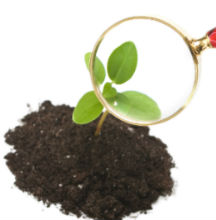Flowers
-
Direct sow annuals, biennials, and perennials after mid-May – last chance of frost
-
Transplant seedlings after hardening
-
Plant tender summer blooming bulbs (begonias, caladiums, cannas, dahlias, and gladiolas)
-
Plant containers and hanging baskets
-
Mix flowers and herbs so pests aren’t attracted to one location
-
Deadhead spent flowers on bulbs – prune foliage AFTER turns yellow
-
Deadhead lilacs, rhododendrons, and other perennials after blooming
-
Pinch back asters, coreopsis, perennial sunflowers, sages, mums, and other bushy perennials to promote fullness and self-support
-
Fertilize annuals and container plants with manure tea, fish emulsion or organic fertilizer every week
-
Plant tropical water lilies
-
Remove unwanted volunteers
Garden
-
Transplant seedlings after hardening – remember they need warm soil to grow so early planting won’t reap early results
-
Harvest early crops; remove any that bolt or get seed stalks
-
Protect ripening strawberries from birds; remove blossoms on young plants to encourage stronger ones; allow day-neutral plants to bloom after 6 weeks; fall-planted crops can bloom and fruit
-
Blanch cauliflower heads when they are 2” in diameter by tying leaves over the head
-
Pinch back annual herbs and thin if needed
-
Keep vegetables and fruits well watered; mulch
-
with straw to contain moisture and reduce weeds
-
Fertilize crops with manure tea (manure in cheese cloth, soaked for several hours, then strained) or slow release organic fertilizer
-
Look for cucumber beetles / cabbage worms – protect with row covers until they bloom
-
Wash aphids off plants with a strong stream of water or get natural predators (lady bugs)
-
Add beneficial insects to garden if needed; provide a shallow dish of water for them and butterflies, and toads
Lawn
-
Leave grass clippings on the lawn to add nitrogen to the soil
-
Be careful not to nick tree trunks when mowing or trimming so pests and/or diseases can’t enter tree; or kill tree by girdling
-
Control weeds before they go to seed; it’s easier to pull them when they’re young and the soil is damp
-
Keep adding to the compost pile; be sure to air by turning or fluffing, and keep it moist
Trees/Shrubs
-
Transplant evergreens that need moving and keep them well-watered
-
Prune early blooming and evergreen hedges, shrubs, and trees; do not prune summer or fall bloomers
-
Prune any missed dead/diseased wood and water sprouts
-
Look for tent caterpillars and bagworms
-
Look for black spot on roses and apply organic fungicides like sulfur or copper-containing soaps; pick up any fallen leaves and do not compost; deadhead for continuous bloom; fertilize every month with 5-10-5
-
Prepare for cicadas by covering young fruit trees and dogwoods with netting
Other May Activities
Water lawn and garden as needed – 1” per week; move houseplants outside with caution so they don’t get sunburned.
Visit the Loudoun County Master Gardener Demonstration Garden at Ida Lee Park in Leesburg to see various gardens and new planting techniques.
Contact the Loudoun County Master Gardener Help Desk with your questions: 703-771-5150 or loudounmg@vt.edu





